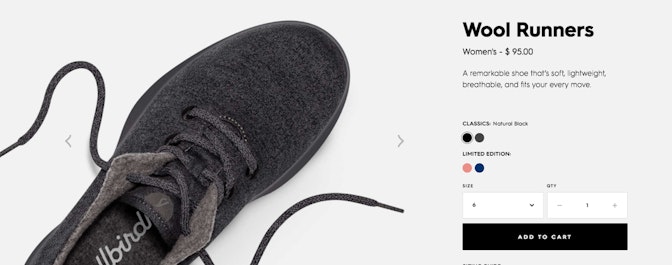Video dominates. And not just on YouTube.
In fact, four of the top six channels which global consumers use to watch video are social channels.
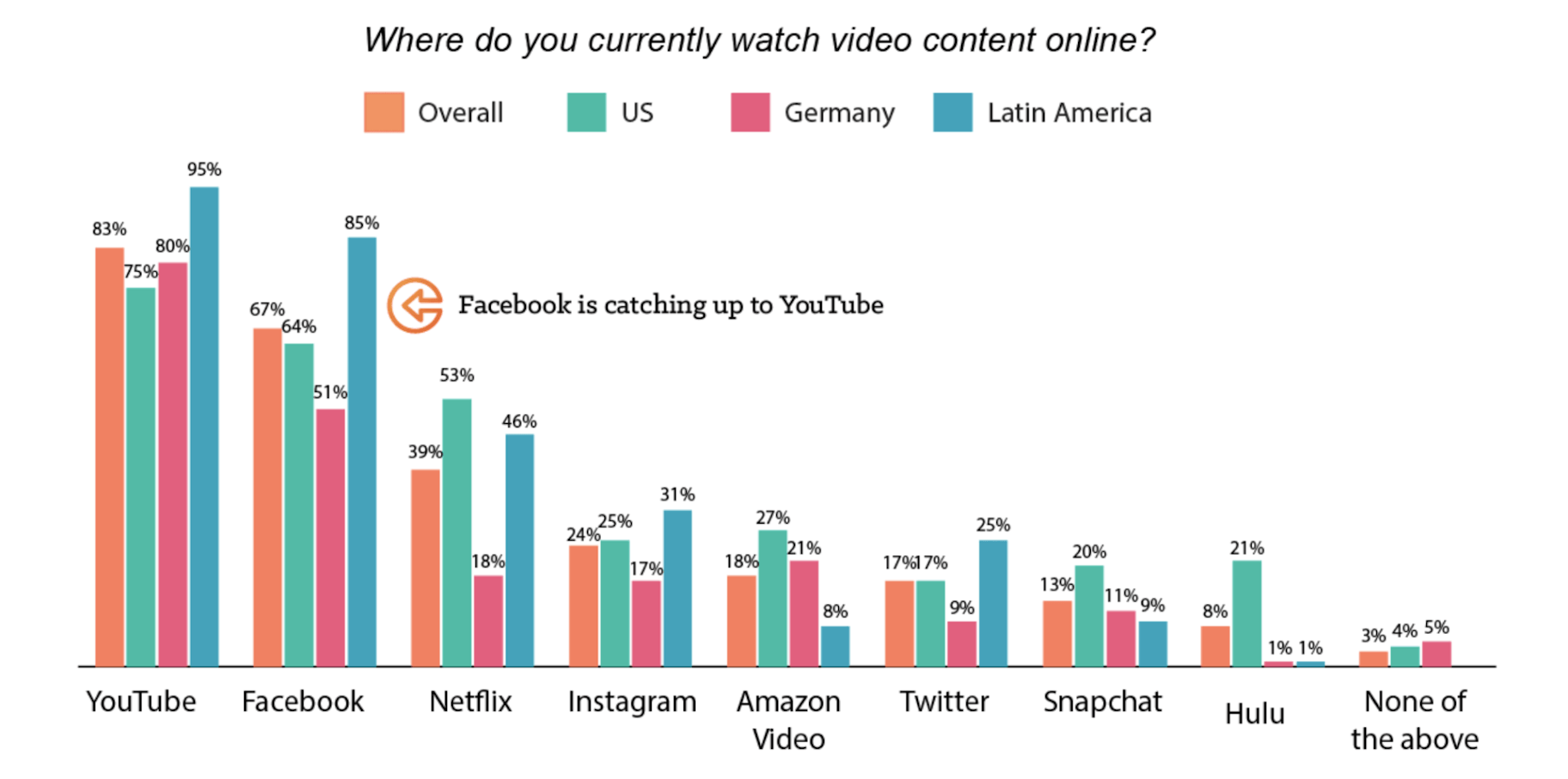
And it’s not like things are slowing down: Facebook’s EMEA Vice President Nicola Mendelsohn predicts that their content will probably be “all video” by 2021.
Plus, technology conglomerate Cisco reports that 82 percent of all consumer internet traffic will be video this year.
What does all this mean?
In short, businesses need to make video marketing an integral part of their business strategy, or risk being left behind.
So where do you start?
In this article, we’ll explore the power of video marketing and the types of video you can use to grow your business.
Then we’ll run through how you can start video marketing today, step-by-step.
Let’s jump in.
Post Contents
- The Power of Video Marketing
- 13 Types of Video Marketing
- 1. Brand Videos
- 2. Explainer Videos
- 3. Event Videos
- 4. Live Videos
- 5. Disappearing Videos
- 6. Educational or How-To Videos
- 7. Demo Videos
- 8. Expert Interviews
- 9. Personalized Messages
- 10. Case Study and Customer Testimonial Videos
- 11. Animated Videos
- 12. Augmented Reality (AR) Videos
- 13. Virtual Reality (VR) and 360° Videos
- How to Start Video Marketing Today
- Step 1: Choose Your Target Audience
- Step 2: Identify What You’re Trying to Achieve
- Step 3: Plan Your Video Marketing Budget
- Step 4: Choose a Type of Video and Come Up with a Video Marketing Idea
- Step 5: Decide Where You Will Publish Your Video
- Step 6: Identify and Solve Creative Challenges
- Step 7: Decide How You Will Measure The Success of Your Video
- Step 8: Make Your Video!
- Step 9: Edit Your Video
- Step 10: Publish Your Video Following SEO Best Practices
- Step 11: Promote Your Video
- Summary: Video Marketing for Businesses in 2021
- Want to Learn More?



The Power of Video Marketing
When it comes to marketing, it helps when people actually want to hear from you.
Videos are a consumers’ favorite type of content to see from a brand on social media. Consumers expect more video content.
→ Click Here to Launch Your Online Business with Shopify
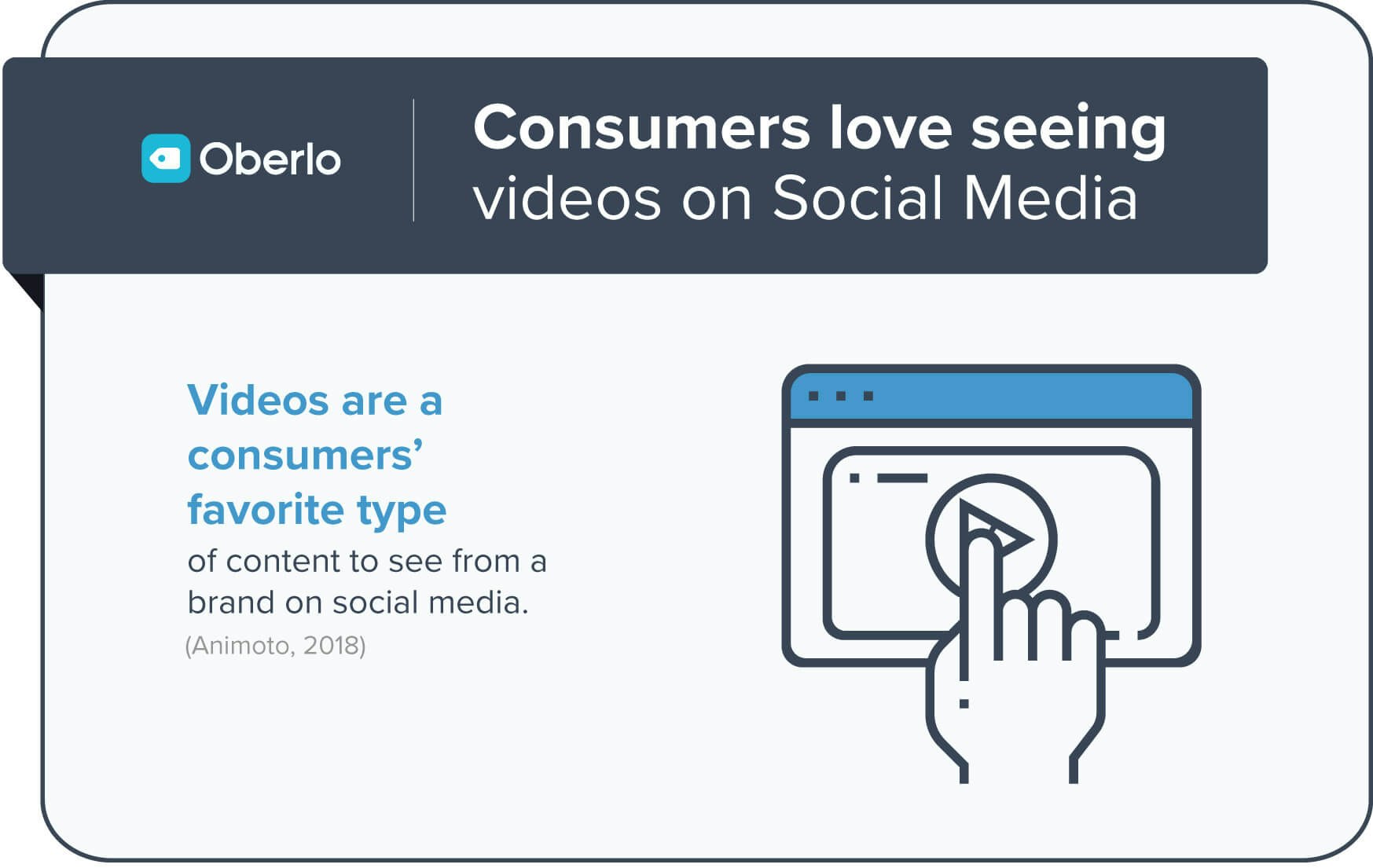
This makes sense – as Facebook’s engineering director Srinivas Narayanan said, “If a picture is worth a thousand words, a video is a library.”
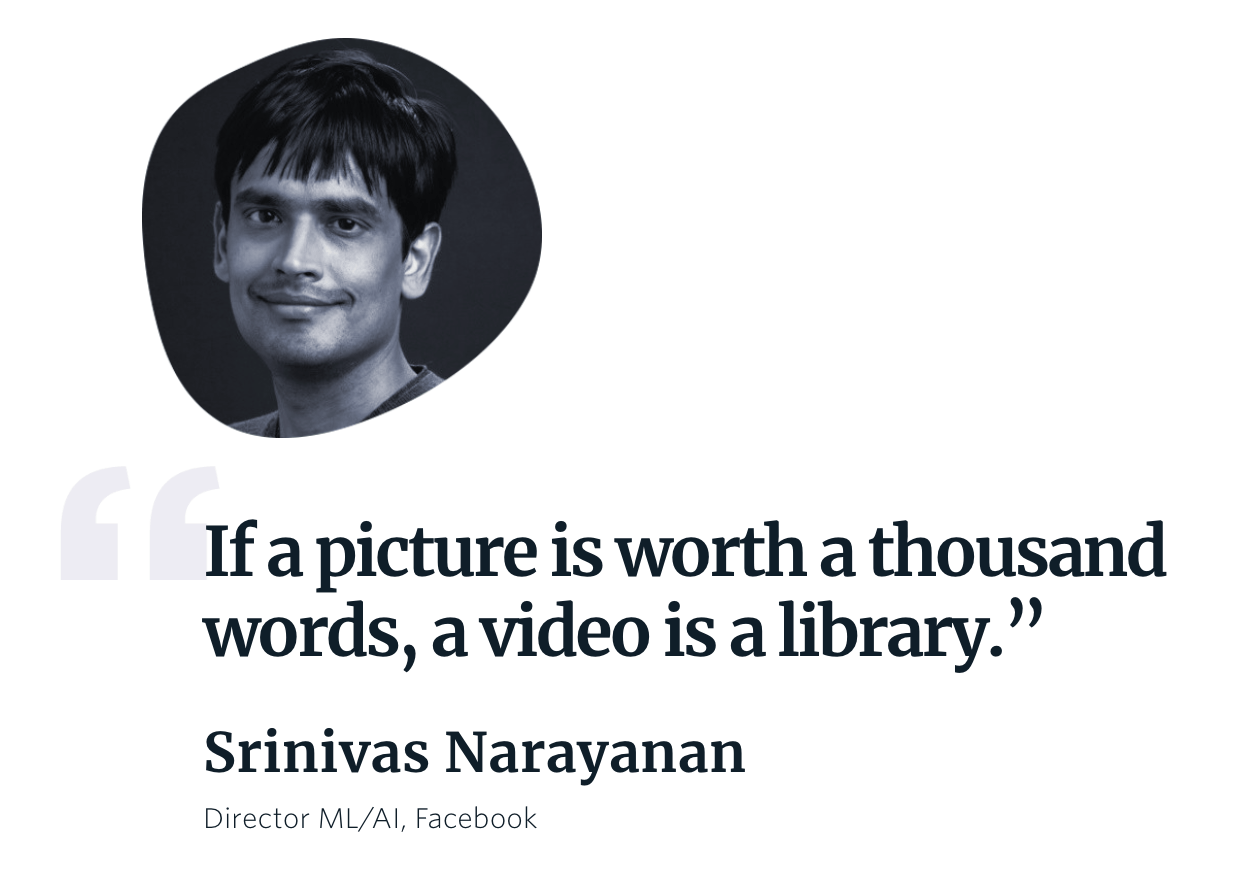
Okay, check this out:
Referring to a study from video content creation platform Slidely, their VP of Communications Hila Shitrit Nissim said: “Considering 44 percent of people watch five or more videos online every single day, social video represents a wildly valuable opportunity for businesses across all industries.”
Now, think about television commercials.
TV ads are broadcast to the masses, and as such, they’re rarely personally relevant to the individuals who are forced to endure them. It’s fair to say that most people universally loathe TV adverts.
However, modern targeting techniques allow marketing videos to be highly relevant to individual consumers.
Nissim adds, “Tailoring video content to your target audience can boost your retention rate by 35 percent. And since 71 percent of consumers find sponsored videos relevant or highly relevant, it’s definitely worth investing in a paid campaign to ensure your videos are seen by the right eyeballs.”

Let’s dig a little deeper.
Because video marketing isn’t just good for capturing attention and entertaining, it’s also an effective tool that you can use to lead consumers through your sales funnel.
For example, a study by Eyeview Digital revealed that using video on landing pages can increase conversions by 80 percent.
What’s more, simply mentioning the word “video” in your email subject line can increase open rates by 19 percent.
The power of video marketing doesn’t stop there.
A massive 90 percent of consumers reported that video helps them to make buying decisions, while 64 percent say that seeing a video makes them more likely to buy.
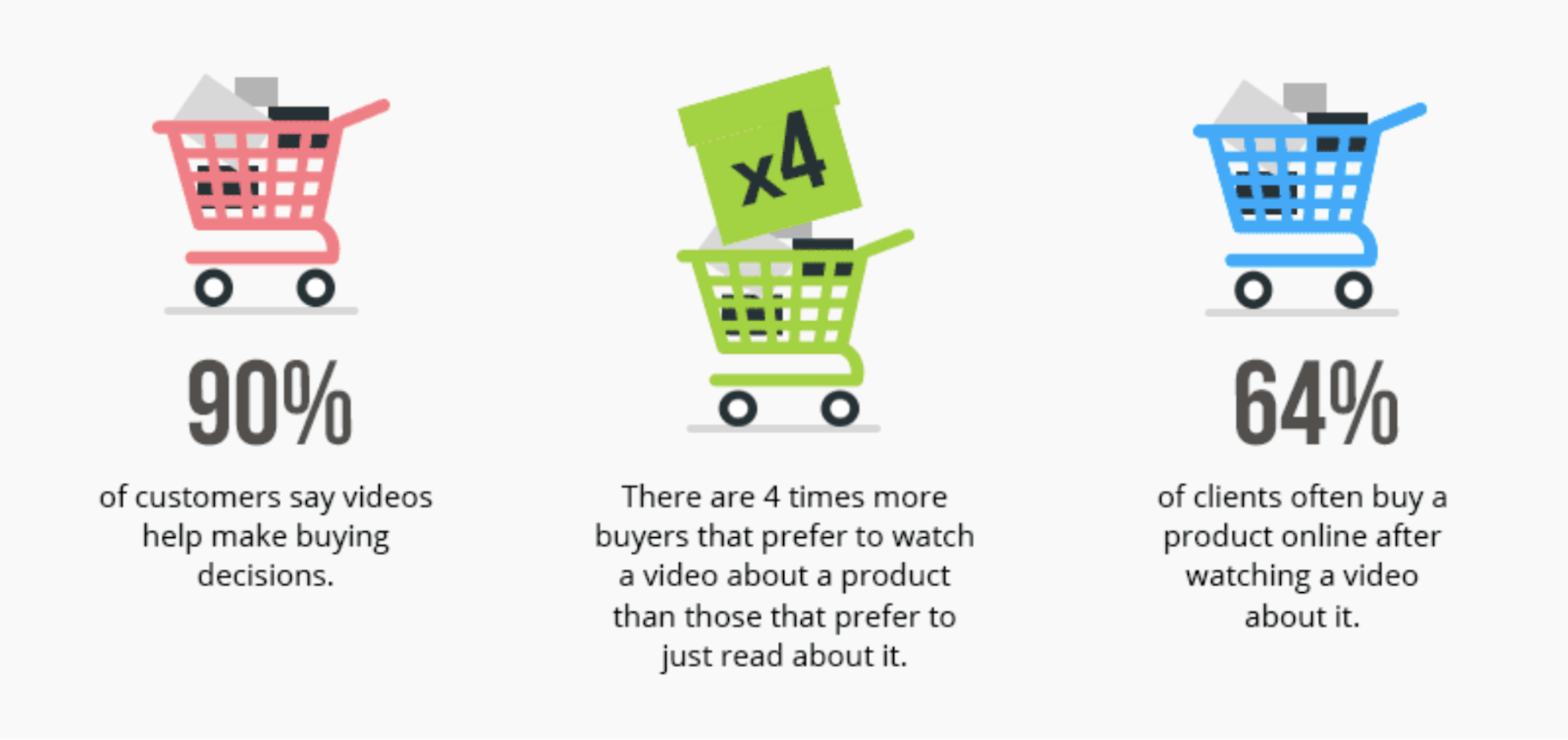
In other words, video marketing shouldn’t be something businesses do occasionally to raise brand awareness.
Instead, videos should be employed for multiple purposes at every stage of the customer journey.
Plus, you have everything you need to get started.
Because according to HubSpot Research, consumers actually prefer lower-quality, “authentic” video over high-quality video that seems inauthentic and contrived.
Simply put, viewers prefer raw authenticity over slick production quality.
This means you don’t need a huge budget or a video production studio to start video marketing. Especially when you consider that you can now shoot in high-quality HD and 4K video on smartphones.
In short, videos are an engaging and powerful medium accessible to businesses of every size.
It’s time to jump on the bandwagon. So which video marketing formats can you harness?
13 Types of Video Marketing
Before you start creating videos, it can help to know the types of video you can use to grow your business.
Here are 13 types of video marketing to consider.
1. Brand Videos
Brand videos are often created as part of a larger advertising campaign.
These videos are often used as advertisements on social media to generate brand awareness and increase traffic.
They usually aim to communicate the brand’s personality, culture, mission and vision, or products and services.
Here’s an example from Volvo Trucks featuring Jean Claude Van Damme. This video showcases the brand’s personality while demonstrating the “stability and precision of Volvo Dynamic Steering.”
2. Explainer Videos
Explainer videos are used to explain how your product works, and how your target audience can benefit from it.
This video from Dollar Shave Club captures attention and entertains viewers, all while explaining the benefits of using their products and service.
3. Event Videos
Does your business ever hold or participate in events? Perhaps you might attend an industry conference or networking event?
Event videos are a great way for businesses to document their experiences and produce a video of the highlights.
Here’s a good example of an event video from Gymshark in which they document their biggest event to date.
4. Live Videos
All the big social networks let users stream live video – whether it’s YouTube, Instagram, Twitter, or Facebook Live.
Broadcasting live to your social media audience allows you to engage viewers in real-time. It also provides a unique creative opportunity which allows brands to promote interviews, presentations, events, and more.
Live video marketing also attracts higher engagement rates. In fact, viewers spend up to 8.1x longer watching live video than video on-demand.
Here’s an example from obstacle race Tough Mudder:
5. Disappearing Videos
Snapchat pioneered the disappearing video format, but today there’s also Facebook Stories and Instagram Stories.
Disappearing videos can add a hefty dose of urgency, which helps capture the attention of your target audience.
Plus, the format itself inspires brands to get creative with their Story content ideas.
Lifestyle brand Vans often use Stories to document and promote their events.
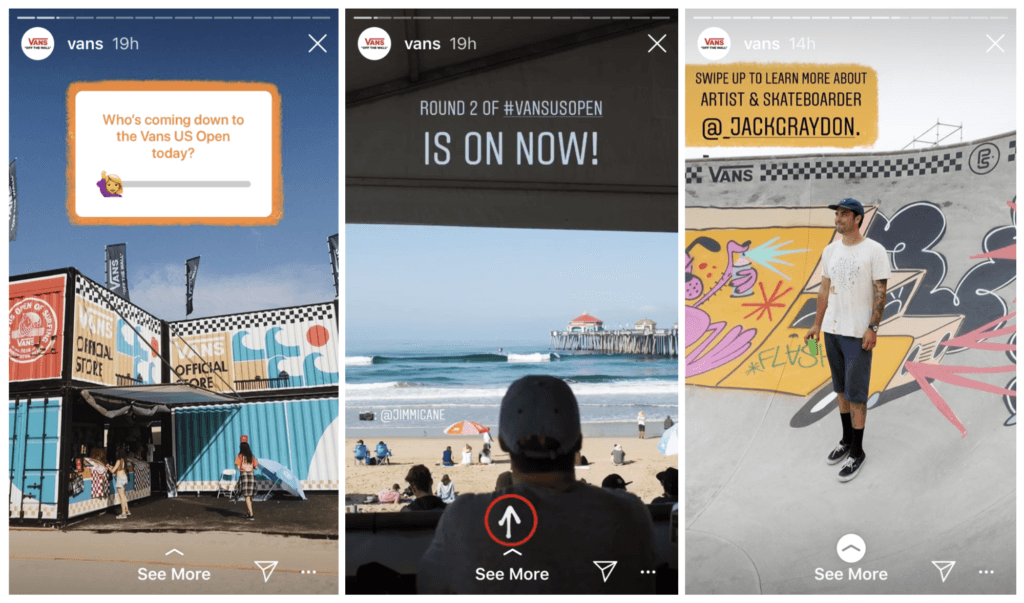
6. Educational or How-To Videos
Educational “how-to” videos can be extremely popular.
Use this video marketing format to teach your target audience something they want to know.
Brands often use these videos to teach customers how to get the most out of their product, or to build a trusting relationship with potential customers.
Here’s one of our “how-to” videos in which we show viewers how to start a t-shirt business:
7. Demo Videos
Demo videos are all about showcasing your product.
Whereas explainer videos tend to sit at the top of the sales funnel by introducing people to your brand, demo videos go deeper.
They aim to highlight all of the key benefits of your product or service and often include a call-to-action to encourage viewers to purchase.
Here’s an example from Native Union promoting their Night cable:
8. Expert Interviews
Interviewing experts and influencers is a fantastic way to deliver real value to your audience.
What’s more, this type of video marketing is a great way to position yourself as an authority at the center of your niche. It also helps to build trust with your target market by harnessing the power of social proof.
9. Personalized Messages
When dealing with customer service requests or inquiries from potential customers, smart brands are using video.
These personalized messages are far more impactful than a standard email response and can help improve trust and loyalty among your social media audience.
Try using a free tool like Loom (they also have a fantastic Chrome extension) to record these short messages and provide a unique, memorable experience for your customers.
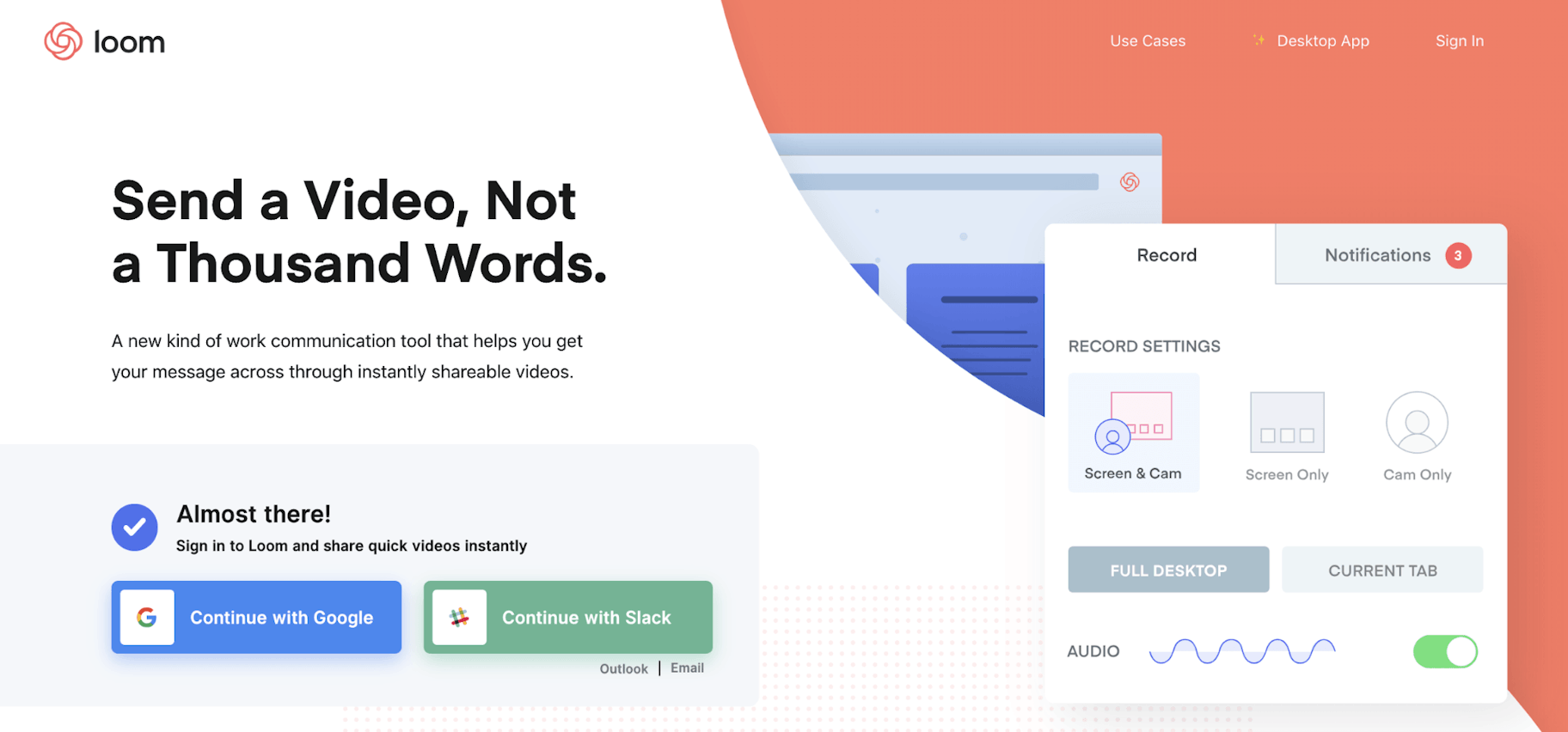
10. Case Study and Customer Testimonial Videos
Case studies or testimonial videos are a great way to increase social proof and influence your target market to move further down the sales funnel.
Your target customers need to know that your product is the perfect solution for their needs. This type of video marketing can help showcase your products while also building trust.
Here’s an example from LifeLock:
11. Animated Videos
Animation allows complete creative freedom. For this reason, it can be the perfect format to explain difficult or abstract concepts.
Additionally, animations can be extremely eye-catching and entertaining. Plus, with animation makers like Animaker, anyone can create high-quality animations.
In this example, Chipotle uses animation to tell their brand story:
12. Augmented Reality (AR) Videos
Augmented reality is the name given to videos or images where a digital layer is added to whatever you are currently viewing.
The technology was popularized by the video game Pokémon Go.
Although augmented reality is still in the early stages of development, there’s still plenty of potential that brands can harness in their marketing campaigns.
For example, PureCycles allows users to explore their products using AR:
To get started with augmented reality, check out Shopify AR Makes Shopping in Augmented Reality a Reality for Small Businesses.
13. Virtual Reality (VR) and 360° Videos
Virtual reality and 360° videos are becoming more and more popular.
Users can view these videos through devices such as Oculus Rift, Google Cardboard, or simply by using a finger or mouse on their device.
Arguably, these videos are currently seen as a novelty. However, as the technology develops, they’re sure to become a more integral and interactive part of video marketing.
Here’s an example from Red Bull featuring one of their popular cliff diving events.
How to Start Video Marketing Today
Now that you have an idea of the types of videos you can use to grow your business, let’s run through the steps you can take to start video marketing today.
Step 1: Choose Your Target Audience
Before you can create an effective video, you need to know who you’re creating it for.
So make sure to clearly define your target audience.
That way, you can tailor the video’s format, messaging, and content to meet the needs and preferences of your viewers.
For example, the image below features three videos from our YouTube channel. Each one has a clear target audience:
- Those who don’t know about dropshipping but who are interested in learning what it is.
- People who know about dropshipping and want to learn how to sell clothes.
- Those who know what dropshipping is and want help to get set up.
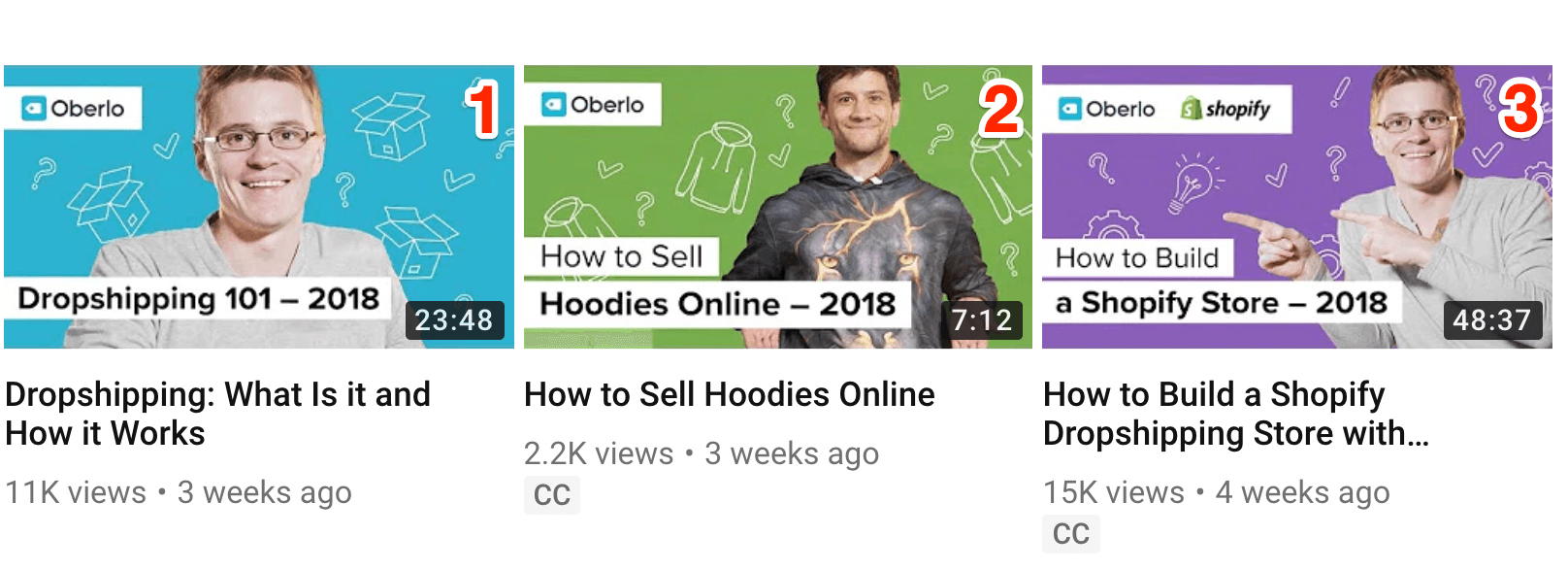
Step 2: Identify What You’re Trying to Achieve
What is the point of your video?
Are you trying to increase brand awareness? Increase sales? Perhaps you want people to sign up to your mailing list?
Whatever it is, be clear on what you’re trying to achieve.
Every single decision you make about your video needs to be filtered through the lens of your ultimate goal.
Step 3: Plan Your Video Marketing Budget
Before you start getting creative with your video, it’s worth looking at the budget and resources you have available.
Can you afford a professional videographer or editor? Do you have money set aside for equipment or studio hire, travel costs, or video advertising costs? Or are you planning to shoot the video on your smartphone?
Get clear on your physical limitations and opportunities.
Step 4: Choose a Type of Video and Come Up with a Video Marketing Idea
Now that you’ve identified your target audience and your video marketing goal, it’s time to get creative.
Choose a video format that best suits your goal.
For example, if you’re looking to drive sales for a 24-hour flash sale, consider using Facebook Stories or Instagram Stories to add an additional layer of urgency to your campaign.
In some cases, it’s best to storyboard or script your video to ensure it turns out the way you hoped. For live videos, Stories, or personal video blogs, write down a few bullet points to make sure you cover the key areas.
Step 5: Decide Where You Will Publish Your Video
If you’re making a standard video, you need to decide where to publish it online so you can make sure to tailor your video to the publishing platform.
For example, Instagram profile videos can’t be longer than 60 seconds.
The main choices to consider are:
- YouTube
- Your website
- Vimeo
- Snapchat Stories
The platform you choose will largely depend on your target audience and your video marketing goals.
It’s best to start with one channel in mind and then you can always repurpose your video for other channels in the future.
Step 6: Identify and Solve Creative Challenges
Now that you can visualize how your video will take shape, try to brainstorm any possible creative challenges that might pop up.
For example, if you’re editing the video yourself, perhaps your editing skills aren’t very professional yet. In this instance, it might be best to stick to one or two simple camera angles and rely on jump cuts to keep the video interesting.
The GIF below shows a clever use of jump cuts (it features two cuts):

Step 7: Decide How You Will Measure The Success of Your Video
This step is extremely important.
Without identifying an effective way to track the success of your video, there’s no way you can objectively understand it’s impact or the ways you can improve future video marketing efforts.
Once again, think about your goals.
If your aim is to create brand awareness, then views, Likes, and shares are an accurate measure of your video’s success.
Still, those metrics are barely scratching the surface of what’s possible.
For instance, you can also monitor how much of your video the average viewer watches, and exactly where people’s attention wavers.
To learn more about video marketing metrics, check out 11 Powerful YouTube Analytics to Help You Grow Your Channel.
Step 8: Make Your Video!
Now that you’ve properly prepared, it’s time to craft your video.
If you’re using a smartphone, make sure to use a tripod or selfie-stick to avoid a shaky shot.
Also, keep in mind lighting best practices.
Ideally, you’ll want to use a simple lighting setup, such as “three-point lighting.”
- Key light: The primary source of illumination.
- Backlight: Provides depth and separation of the subject and the background.
- Fill light: Eliminates shadows.
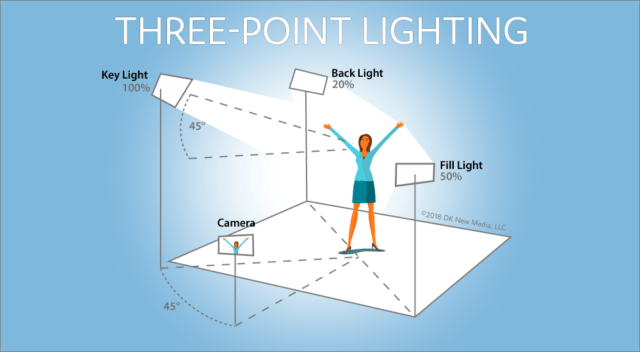
If in doubt, stick to plenty of soft, natural light and avoid hard shadows.
Step 9: Edit Your Video
Once you’ve captured your video footage, it’s time to edit.
If you’re just starting out, check out free video editing programs such as Movie Creator for Windows, or iMovie for Mac. Alternatively, if you’re making a smartphone production, use one of the many free mobile video editing apps available.
Run through your footage and narrow it down to the very best clips.
Remember the classic writing advice, “Murder your darlings.” If the clip isn’t absolutely vital to the story or doesn’t add anything for the viewer, cut it.
Lastly, unless it’s particularly on-brand, avoid cliche transitions or effects and stick to simple jump cuts.
Step 10: Publish Your Video Following SEO Best Practices
If you don’t optimize your hashtags, title, keywords, and video description, you will miss out on free exposure.
So when you publish your video, don’t forget to use SEO best practices.
Use an eye-catching title, include relevant hashtags, and write an accurate description peppered with keywords.
Then, publish your video during one of the best times to post on social media.
Step 11: Promote Your Video
Lastly, make sure to promote your video across all of your social media channels and to any relevant email segments.
You can also boost your video engagement by replying to comments quickly and prompting viewers to like and share the post.
Summary: Video Marketing for Businesses in 2021
Here’s a summary of video marketing for businesses in 2021:
- Identify your target market and what you hope to achieve.
- Plan your budget and identify any challenges ahead of time.
- Choose your video type and publishing platform.
- Brainstorm an impactful idea.
- Identify and solve creative challenges.
- Choose a key performance indicator to measure your video’s success.
- Make your video and remember to stabilize your shots and ensure they’re well lit.
- Edit your video down to the very best clips.
- Publish your video at peak times using SEO best practices.
- Promote your video across your online channels and reply to comments to boost engagement.
Once you’ve published your video marketing campaign, come back periodically to evaluate its performance.
Also, look for ways you could have improved it and take this into account when you create your next video.
Lastly, don’t fret!
Remember, viewers actually prefer videos that are raw and authentic over professionally staged ones.
Have you made videos for your business? Drop a link to your video marketing campaign in the comments below!




